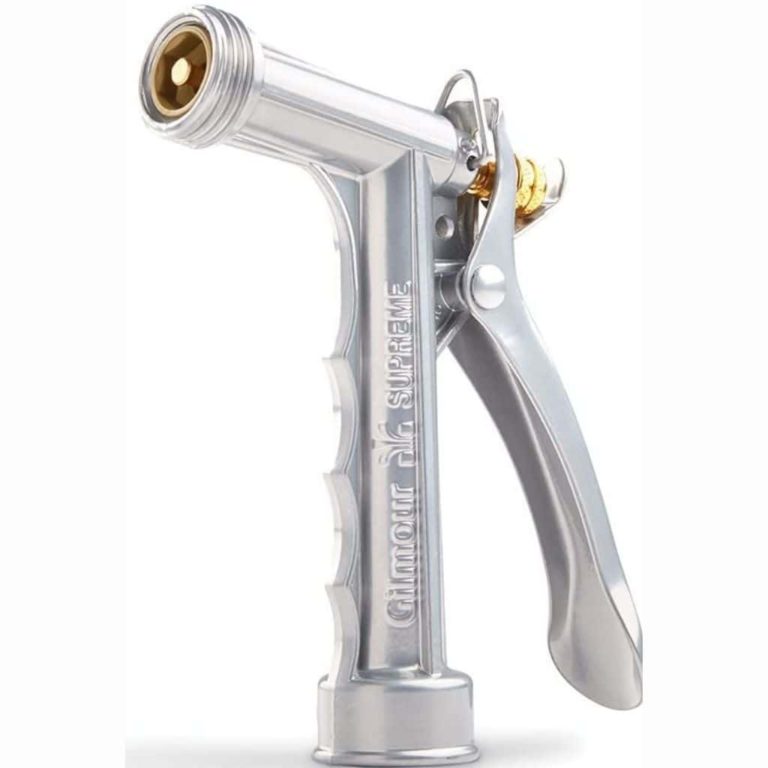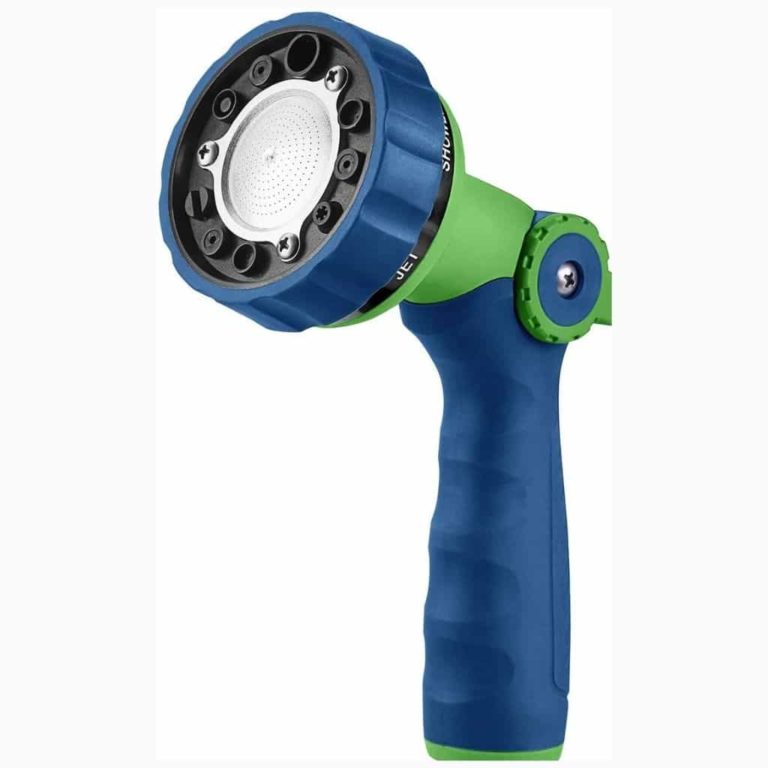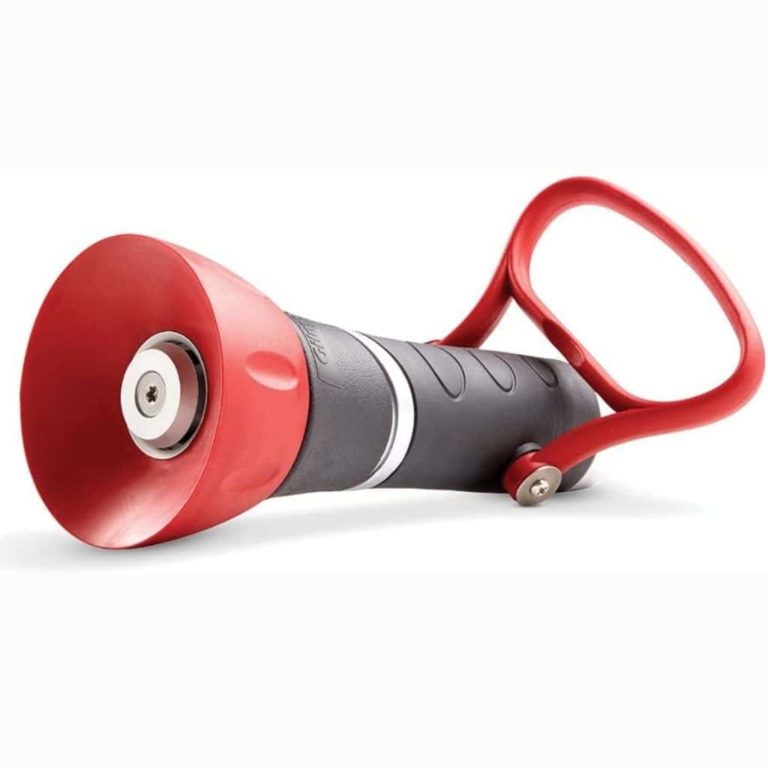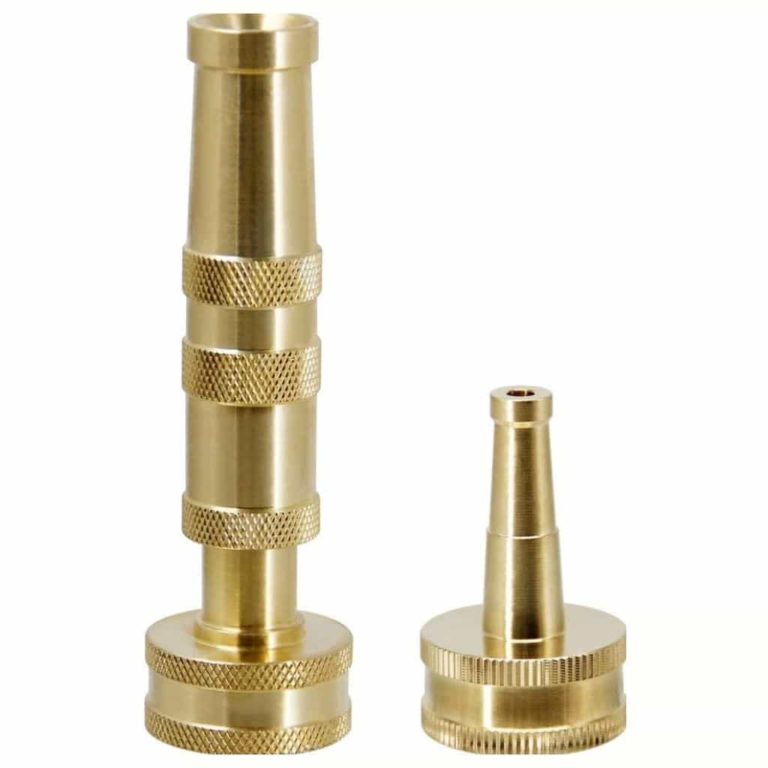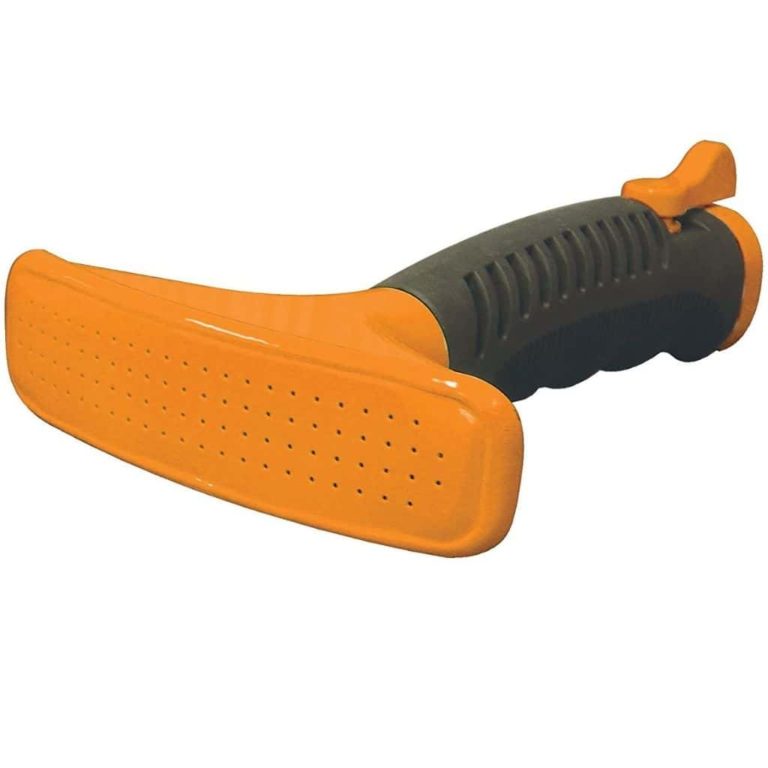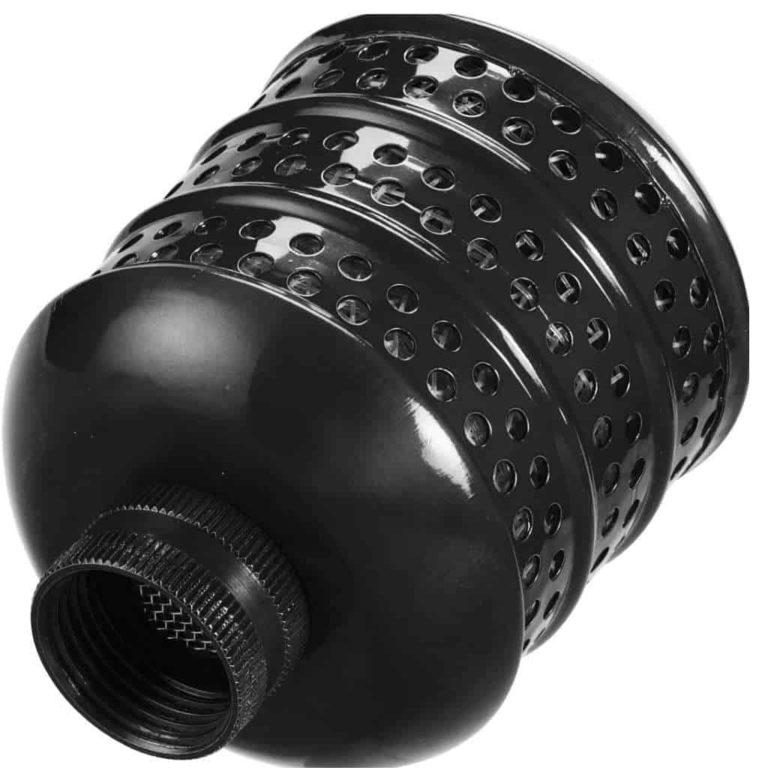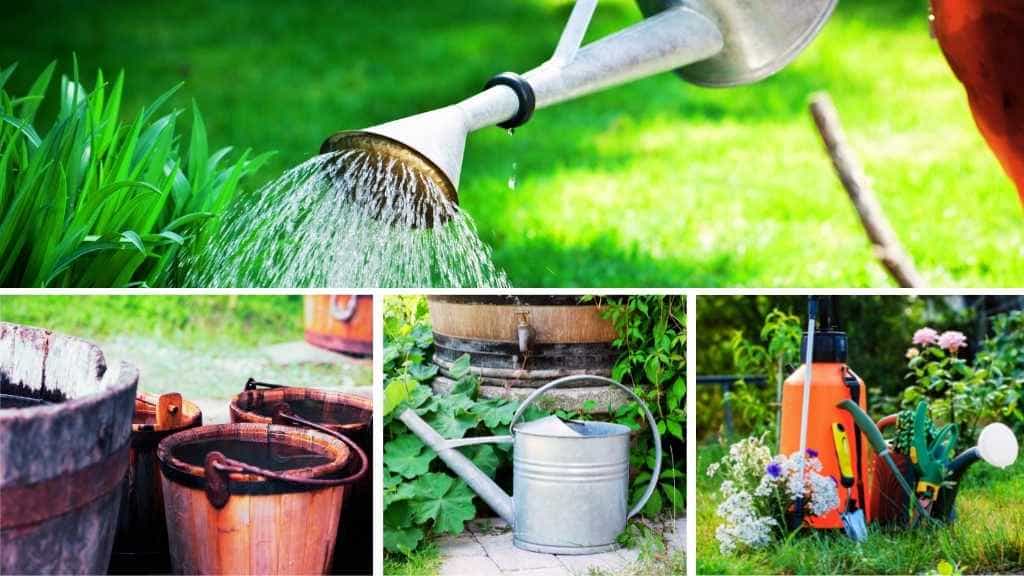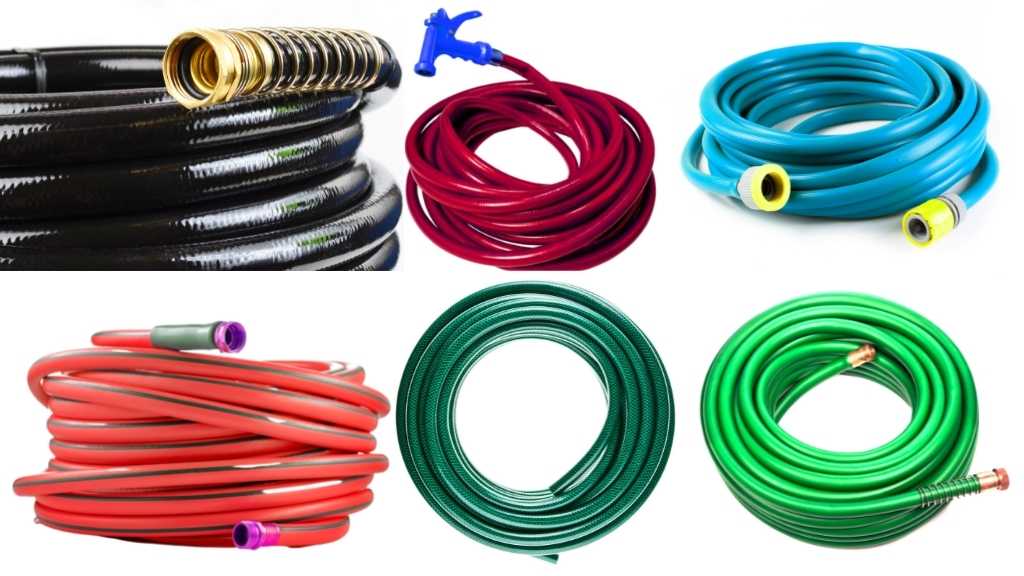When we finished understanding which criteria to check before choosing our gardening hoses, a new challenge was raised! We didn’t want to use our fingers to adjust the water flow from our gardening onto our plants. It is simply too hard for us! So, we understood that we need to also choose some hose nozzle sprayers, to use with our garden hose.
With so many options on the market, we took in the challenge and started our quest.
In this post, we compile the main criteria we used before choosing our water nozzles. You will find here information about the sprayer nozzle materials, the main nozzle types, and their thread sizes (or which size to choose).
Make sure you go step by step through each feature to better understand which hose nozzle will be best for you!
So, let’s dig right in!
When choosing a water hose nozzle always check the below features of the product:
- Technical capabilities – Water flow (GPM) and Water Pressure (PSI) specs
- Material quality- what are the water nozzles made of and overall structure
- Hose nozzle thread size
- Ease of use – maneuvering options and overall weight
- Watering patterns – how many types of water stream options are available
- Price
Technical Capabilities
In terms of the technical capabilities of a hose nozzle, we need to check the below two main characteristics.
1. What is the PSI of a garden hose nozzle?
Why is water nozzle PSI important? Well, PSI stands for pounds per square inch, and it is the measurement unit for the water pressure. The lowest the PSI, the lowest the pressure in a watering system. When we say watering system, we refer to water pipes, garden hoses, or hose nozzles.
If you wonder what the PSI of a garden hose nozzle is, this information is mentioned on the nozzle packaging, and it will tell you how much water pressure the hose nozzle can deliver.
A good water nozzle should have a capability of a minimum of 50 PSI. Most residential water nozzles have a max pressure of over 100 PSI. This is considered very high-pressure.
This level of pressure is useful when using a normal garden hose with a jet nozzle spraying pattern to do some cleaning. But do not use this type of water jet directly onto your plants when watering the garden.
We already have a post dedicated to the actions we can do to control or adjust the water pressure in our garden hose. If this is something you are interested in, check this post here.
2. What is the GPM of a hose nozzle?
A hose nozzle GPM will tell you what the water flow rate capability of that nozzle is. GPM stands for gallons per hour. Hose nozzles will have this information mentioned in the packaging details.
The nozzle GPM will give you a clearer idea of how long it will take you to properly water a specific garden area.
You will find a hose nozzle with a water flow capability as low as 2.5 GPM. These numbers can increase considerably, depending on the brand and nozzle model. Nozzle description will provide a GPM tier for the available GPM that it can deliver.
As we could not tell in the beginning how much GPM we will need the nozzle to have, we a medium GPM nozzle of 2.5 GPM to 5 GPM.
What Are Hose Nozzles Made Of?
Hose nozzles can be made using a single type of material, or a combination of different types of materials. We listed the main types of materials in the table below.
The Materials used when producing Hose nozzles are:
Single material | Combination of materials, nozzle body vs exterior: |
|
|
To decide which material is better, consider the external factors that can cause damages to nozzles in general.
As a water hose nozzle’s job is to spray water. Therefore, the humidity inside the nozzle will be high during its entire lifespan. In other words, there are very short periods of time when the hose nozzle will be completely dry between uses.
Humidity causes material corrosion. And some materials are less resistant to these two exterior factors than others.
Cheap metal alloys tend to develop rust and other severe interior damages caused by corrosion. This can then impact the functionality of the nozzle. The first signs are the leakage problems and ending with complete nozzle failure.
Plastic nozzles usually have some metal components on the inside of the mechanism. As explained above, if those materials are low quality, they will most likely last less.
The exterior layer of the nozzle, usually made of hard plastic with a rubber grip, can also suffer damage. The risk factors are sun exposure, dragging the water nozzle on rocky ground, or dropping it on the ground by accident. Plastic breaks easier than metal, no matter what kind of metal alloy is used.
So, there is no perfect option out there. Yet, you can still find good quality water hose nozzles. By quality, we refer to both the materials used to build the water nozzles and the quality of the nozzle assembly, in general.
Thus, make sure to check the nozzle appearance to see if the different parts combine as they should. The manufacturer’s attention to detail is usually an indicator of a good quality product.
From our personal experience, sprayer nozzles made of different types of plastics tend to break the quickest. These might be cheaper, but some will barely last for one season.
Hose nozzles fully made of good quality metal alloy, such as zinc alloy, are long-lasting. They do work very well but some might not be so comfortable to use. Metal nozzles are heavier and usually disperse a very powerful jet of water.
We prefer metal alloy or, even better, a heavy-duty brass nozzle body with a good quality ergonomic rubberized grip.
We believe this type of hose nozzle is combining metal resistance and endurance with the rubber finish qualities. This translates into increased resistance in case of different accidents. It also provides the proper comfort while using the nozzle.
How To Choose A Nozzle Size
A water hose nozzle can have different types of screw threads. The most common ones are the GHT type of threads.
The main types of threads that you can find on a water nozzle are detailed below.
GHT – garden hose threads. These have parallel thread lines. Mostly used for gardening and they will fit most standard garden hose end connectors of the same diameter size.
NPT – national pipe tapers. These have tapered thread lines. Mostly used for plumbing pipes. In most cases, you will need special adaptors to fit these types of threads to your garden hose.
Hose Barbed Fitting – it can have one or several barbs and has a male-threaded end that mates with female threads.
When using it, it will grip on the inside diameter of the hose end fitting. When the nozzle has this type of fitting, it is important to make sure it meets the inside diameter specification of the garden hose being used.
Important to consider GHT is not compatible with NPT.
Each of the nozzle thread types comes in 1/2inch or ¾ inch thread sizes. These sizes will fit into the same size diameter of the hose end connector.
If you are not sure on which diameter size of your hose end connector, you can always purchase some type of hose adaptors. The easiest to use is the garden hose quick connector. They are usually sold in sets, and they come in ½ inch and ¾ inch sizes. Usually, a quick connect set includes male connectors, female connectors, and free washers. These types of connectors are built to fit any standard garden hose, faucet, and watering device.
How Many Types Of Nozzles Are There? (Hose nozzle triggers - maneuvering options)
The hose nozzle models on the market are different depending on how they are actioned. The types of triggers and how you use them are different from one model to another.
The main categories of nozzles depending on their trigger type are the below ones:
- Click control button –turns the nozzle on/off with a simple push of a button.
- Front control grip – press the handle of the nozzle to release the water flow. When you stop pressing it, the nozzle will turn off. You press it with your fingers.
- Rear control grip – similar to the above model, the difference is the grip handle is placed in the back of the nozzle. And you push it with the back of your palm.
- Thumb control – turn the nozzle on/off by swinging a valve front and back. This valve is usually placed on the top of the nozzle. The valve handle can be small, and you can control it with your thumb.
- Full hand control – these models have larger size valves, and the valve handle is very similar to the water nozzles used by firemen. To activate it you will need to use your hand strength.
- Twist control – turn the nozzle on/off by twisting the head of the nozzle to the right or left side. The water volume will increase/decrease gradually depending on which side you are spinning.
All the above nozzle trigger types can be included in several models of water nozzles.
Below are the main hose nozzles types that we found available in most hardware stores. We also provide a short description and how to use instructions for each of these.
1. Pistol Grip Nozzle
Pistol grip nozzles are named as such because of their shape, as they look similar to a pistol and it is easy to grip them. The trigger handle can be installed either on the front or on the rear of the grip. Usually, these pistol nozzles have a single type of stream pattern available, the jet stream. The pistol grip nozzles are great for any outdoor cleaning, such as cleaning your car, walkway, deck, patio furniture.
Most models also have an inbuilt valve that will allow you to adjust the water pressure in the jet stream.
This flow control dial will help you increase the stream power when you need to reach a certain distance, or you can decrease its pressure.
Another way to adjust the pressure in the pistol nozzle water stream is to control how far you pull the trigger on the pistol nozzle. The trigger allows you to control the water flow.
The pistol nozzle is easy to use, you just need to point it in the desired direction and pull the trigger to start the water flow.
Some models can also be equipped with a lock-in spray clip. This clip holds the nozzle valve open for continuous water flow.
2. Turret Pistol Nozzle
The turret pistol nozzle is similar in appearance to the pistol grip water nozzles.
The main difference is that the turret nozzles include multiple watering patterns.
The water flow pattern can be changed by spinning the turret nozzle head.
This pistol nozzle model can have different maneuvering options.
They can have a front or rear trigger, they can have a thumb control trigger, or they can be actioned by simply twisting the nozzle head.
The models that have some type of trigger either front or rear trigger, also include a lock bar at the bottom of the handle.
This type of lock-in clip helps with keeping the water flowing without you having to apply any pressure. Use the clip when you don’t want to keep your hand holding the trigger the whole time.
To use the turret pistol nozzle, first, switch the nozzle head to the desired watering pattern, then point it in the desired direction. Start the water flow by pulling the trigger or by pushing the thumb control handle forward.
3. Fireman High-Pressure Nozzle
These types of water nozzles are actioned by pulling the On/Off lever of the nozzle and by twisting the nozzle head.
The fireman nozzle for the garden hose comes in two main different models.
One type of model is the fireman nozzle that connects to the hose as an extension of the garden hose. This nozzle does not have any dedicated nozzle grip handle.
The second type of model is similar in appearance to the turret pistol nozzle. It has a pistol grip body and different watering patterns inbuilt in the nozzle head.
The difference is that instead of a pistol trigger, the water flow is controlled by a large On/Off Handle.
In terms of watering patterns, the fireman nozzle models are different.
There are fireman nozzles that have a single jet stream pattern. These types of nozzles have an adjustable spray head that alters the jet stream pressure, from powerful jet to light rinse.
The other types of fireman nozzles have multiple watering patterns similar to the turret pistol nozzle. By rotating the nozzle head to different watering patterns, the stream will change from a powerful high-pressure jet stream to a soft shower or mist spray.
The water pressure can be adjusted by moving the fireman-like handle of the top side of the water nozzle.
Choose a Fireman nozzle when you need to distribute high pressurized water to longer or higher distances, with a high flow rate and water pressure.
4. Sweeper Nozzle
Sweepers are twist nozzles that have a straight barrel that must be twisted to turn on the water flow. These types of water nozzles have a single type of jet stream that is easily altered by rotating the sweeper nozzle head. The water pattern can turn from a strong jet stream to a fine mist spray by doing so.
You can use the adjustable twist barrel nozzle for a large range of water activities.
Turn your standard gardening hose into a power washer when using the nozzle for targeted cleaning activities.
You can also turn the stream into a light mist when using the garden hose for watering the garden plants.
Single Spraying Pattern Nozzles
Fan Nozzles
The Fan Nozzles for garden hoses disperse water in a rain-like spray pattern.
They have an adjustable flow control and an ergonomic insulated grip for comfortable use.
Most fan hose nozzle models have thumb control handles. But there are models that use Shut Off Lever, to control the water flow from Off to full strength with the built-in valve.
This is how you can control the water flow level. There is no available water pressure adjustment included in the fan nozzle spray set up.
They will work based on the water pressure from your hose bib and garden hose.
The gentle shower-like stream is the only watering pattern when using a fan nozzle.
The fan jet nozzles for garden hoses are perfect for gently watering smaller gardens and moreover for fragile outdoor plants. Use these nozzles for any watering tasks that require a gentle and delicate water stream.
Bubbler Nozzles
The bubbler jet nozzle delivers a high volume of water with very low pressure.
When using bubblers, the water flows gently through the perforated holes of the nozzle The stream bubbler creates a flood-like water flow.
There are multiple benefits when it comes to using a bubbler sprinkler nozzle.
- This type of watering allows water to soak into the ground gently but rapidly
- Using this type of bubbler water nozzle prevents soil erosion
- It saves water in drought periods as the water will deliver water exactly where is needed
Using a stream bubbler nozzle is ideal for all vegetable gardens, small or fragile plants, flower watering, or very dry spots in your garden.
On top of the water nozzle types detailed above, there are also specific nozzle types as the ones we will continue describing going forward.
Special Garden Hose Nozzle Attachments
The special hose nozzles are the nozzle attachments that you do not use on a day-to-day basis. You need to use these types of nozzles for specific situations such as fertigation, different cleaning activities, or watering plants that are not on the ground surface.
We continue listing below the main types of special water nozzle attachments.
1. Hose Fertilizer Sprayer Attachment
The liquid fertilizer nozzle is used for applying herbicides, pesticides, and fertilizers onto the garden plants while watering them.
The fertilizer nozzle connects directly to your standard garden hose.
It automatically mixes the chemical solutions with the water from the hose while watering the garden or specific plants.
The hose-end sprayer fertilizer had three main components: the nozzle, the deflector nozzle head, and the reservoir container where the fertilizer liquid is placed.
The fertigation nozzle matches any garden hose end. It has a water flow trigger pistol, usually with different spraying patterns available, just like a standard water hose jet nozzle.
How does a fertilizer sprayer work?
Add the fertilizer to the hose end mixing sprayer reservoir according to the specifications for the specific fertilizer or chemical treatment that you want to use. Connect the reservoir container to the fertilizer nozzle.
Turn on the water from the faucet and then turn the nozzle to a fully open position.
As the water from the garden hose travels through the nozzle, it creates a vacuum which increases the pressure in the mixing container. This determines the chemical solution from the container to lift through the container straw and exit through the hose end nozzle as it combines with the hose water flow.
In other words, the fertilizer liquid which you add to the hose end container will be automatically mixed with the water from the garden hose, when the sprayer nozzle is turned on.
There are different types of fertilizer nozzles for garden hose use, depending on the hose end sprayer instructions.
The main fertilizer spray nozzle types are:
- Fixed-rate hose-end mixing sprayer – these sprayers are set to siphon only at a fixed rate. This means there is only a single fertilizer ratio that you can use.
- Adjustable-rate hose end garden sprayer – these sprayers have an inbuilt meter dial on the nozzle that allows you to siphon at a custom, adjustable rate. By using this type of hose end mixing sprayer, you will be able to choose between different fertilizer ratios.
- Ready to use fertilizer sprayer nozzles – these sprayers include the mixing solution. The fertilizer or chemical treatment solution is already prepared and included in the mixing bottle container. All you need to do is to connect the ready-to-use hose-end sprayer to the garden hose and start spraying.
Use this type of hose end nozzle to apply all types of gardening chemical solutions to your plants while watering.
2. Foaming Hose End Sprayer
The Hose Cleaning Sprayer works on the same principles as the above-described hose end fertilizer sprayer.
The foaming hose-end sprayers include the cleaning mix solution. These types of hose nozzles have different watering patterns available by spinning the nozzle head.
The jet tip watering pattern helps you reach incredible high distances, even up to 30 feet high. Therefore, you can use this type of cleaning hose-end nozzle to clean any remote or hard-to-reach outdoor surfaces such as the house siding or the rooftop. And all of this without any ladder being required.
You need to simply attach the cleaning hose-end sprayer to your garden hose and turn the nozzle on.
The cleaning solution provided with the cleaning hose-end sprayer is usually safe to use on all types of surfaces. You need to spray the cleaning solution on the desired surface, let it sit for a few minutes, and then rinse it off.
The foaming hose-end sprayer is commonly used for car washing. It works well with car cleaning shampoos and spreads a large amount of cleaning foam when used.
3. Watering Wand Nozzle
The hose wands are the preferred hose nozzle extensions for watering hanging baskets.
The water stream provided by the wand hose nozzle is a rain-like spray that distributes water evenly, with low to medium pressure. This gentle spray will not harm fragile or younger plants and it won’t wash the soil away.
The wand nozzle lever will help you direct the stream to the exact spot where the water is needed.
Watering wands often have adjustable spraying patterns similar to a standard water hose nozzle.
Watering wands can be actioned by either a front or rear trigger, or a thumb control handle.
4. Hose Sprinkler Attachment
There are several models of oscillating sprinklers for standard garden hoses.
These sprinklers can have different watering patterns and oscillation patterns. You need to simply connect them to your gardening hose and turn the water on from the faucet.
Using hose sprinkler nozzles is a great alternative when you don’t have or do not intend to install an automatic irrigation system for your lawn.
Instead of installing a complicated irrigation system, especially for smaller outdoor areas, you can always set up your backyard hose with a sprinkler attachment.
Conclusion
Choosing a garden hose water nozzle is a simple task. First, you need to understand exactly what your garden watering needs are. Secondly, you need to understand for which other tasks you can use your gardening water hose. In most cases, besides watering the garden, we use our backyard hose for different cleaning activities. There are several hose nozzles that can improve any outdoor cleaning activity and make this task easier for you.
In this post, you will find a full list of water nozzle types, how and when to use each.
We also provided valuable information regarding the best hose nozzle materials and sizes.
Feel free to come back to this short nozzle buying guide whenever you want to add a new nozzle to your gardening tools collection.

